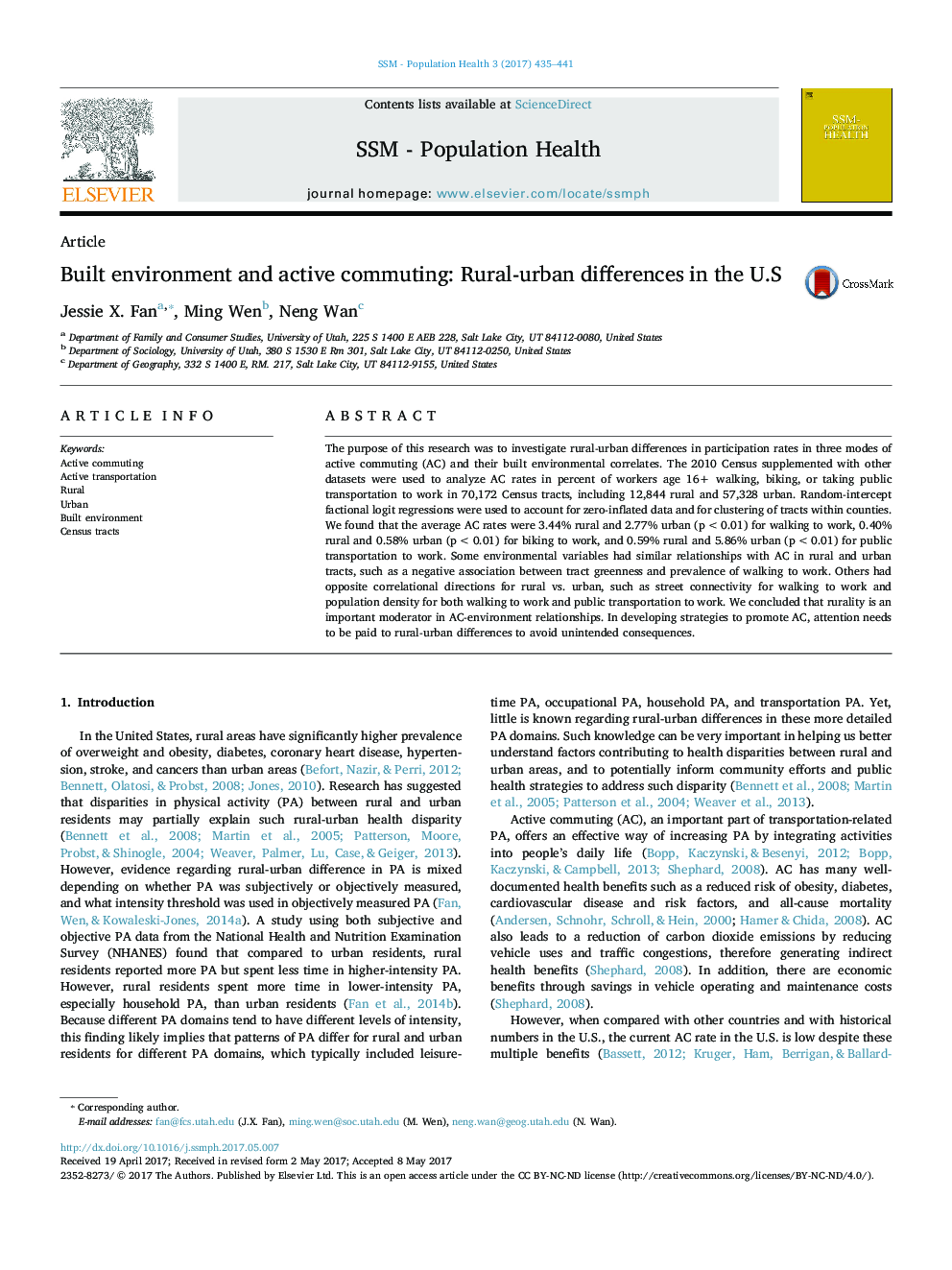| کد مقاله | کد نشریه | سال انتشار | مقاله انگلیسی | نسخه تمام متن |
|---|---|---|---|---|
| 5123275 | 1487259 | 2017 | 7 صفحه PDF | دانلود رایگان |
- The average active commuting prevalence in all U.S. tracts is 2.89%, 0.55%, and 4.89% for walking, biking, and public transportation to work around 2010, respectively.
- Rural tracts have a higher prevalence of walking but lower prevalence of biking and public transportation to work than urban tracts.
- Rural-urban differences in the associations between AC and environment are complex, with some variables showing opposite correlational directions, such as street connectivity for walking to work and population density for both walking to work and public transportation to work.
- In developing strategies to promote AC, attention needs to be paid to rural-urban differences in order to avoid unintended consequences of “one-size fit all” type of approaches.
The purpose of this research was to investigate rural-urban differences in participation rates in three modes of active commuting (AC) and their built environmental correlates. The 2010 Census supplemented with other datasets were used to analyze AC rates in percent of workers age 16+ walking, biking, or taking public transportation to work in 70,172 Census tracts, including 12,844 rural and 57,328 urban. Random-intercept factional logit regressions were used to account for zero-inflated data and for clustering of tracts within counties. We found that the average AC rates were 3.44% rural and 2.77% urban (p<0.01) for walking to work, 0.40% rural and 0.58% urban (p<0.01) for biking to work, and 0.59% rural and 5.86% urban (p<0.01) for public transportation to work. Some environmental variables had similar relationships with AC in rural and urban tracts, such as a negative association between tract greenness and prevalence of walking to work. Others had opposite correlational directions for rural vs. urban, such as street connectivity for walking to work and population density for both walking to work and public transportation to work. We concluded that rurality is an important moderator in AC-environment relationships. In developing strategies to promote AC, attention needs to be paid to rural-urban differences to avoid unintended consequences.
Journal: SSM - Population Health - Volume 3, December 2017, Pages 435-441
